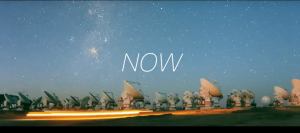Historians often point to The Renaissance many centuries ago as humankind’s most creatively prolific period. Indeed, timeless discoveries and masterpieces in art, literature and science burst forth from geniuses such as Leonardo de Vinci, Michelangelo, and Galileo.
Galileo.
I spend a lot of my spare time studying about social and cultural change, and I respectfully disagree with such historians. I passionately believe that future historians will look back and agree that today – right now – stands as humankind’s most creatively prolific time.
There has never been a better time to innovate . . . to make the impossible possible. #NeverBetter
Today, however, ingenious entrepreneurs around the world, sculpting new technology solutions, are the ones accelerating innovation at an unprecedented pace. These tech-driven innovators are highly creative in their own right – business and social problems capture their mind’s eye, digital platforms become their canvas, and technology tools are their paints and brushes.
 The unprecedented breadth, depth, and volume of today’s innovations stagger the imagination. And instead of creating breathtaking paintings, these innovators are creating new products, solutions and services in every industry to improve efficiency and enrich experiences. Today, clouds can protect rhinos, trucks can drive themselves in dangerous moments, and doctors can treat children 6,000 miles away. The outcomes are seemingly limitless.
The unprecedented breadth, depth, and volume of today’s innovations stagger the imagination. And instead of creating breathtaking paintings, these innovators are creating new products, solutions and services in every industry to improve efficiency and enrich experiences. Today, clouds can protect rhinos, trucks can drive themselves in dangerous moments, and doctors can treat children 6,000 miles away. The outcomes are seemingly limitless.
So why are we so fortunate today? Why are we living in a time when this technological renaissance – the biggest rebirth since the Industrial and Internet revolutions? – helps innovation to flourish like never before? There are many reasons, and below are three that I think are key drivers accelerating and unleashing this version of 21st century creativity:
- The Digital Revolution. Clearly, the mass digitization of business and society is the primary force behind today’s innovation. Digitization provides innovators with new ways to transform business models, processes, software and systems that make companies more competitive and citizens more healthy and happy. The near ubiquity of data and the growth of analytics on the Internet yield insights for innovations to proliferate. And digitization will only grow exponentially. According to Cap Gemini and MIT, 78 per cent of businesses surveyed said that achieving digital transformation will become critical to their organization in the next two years.
- Connection of Technologies, People and Things. Today’s digital platform on the internet is architected as a network to integrate and capture value from a full portfolio of applications, data centers, clouds, security, collaboration, Internet of Things, analytics and services. This convergence of technologies comes at the same time that more and more things are being connected. By 2020, Cisco predicts that more than 50 billion things with IP addresses will be connected to the Internet. IDC finds that one million devices will go online every hour until 2020, and 200,000 new apps and services will be available by 2018. All this creates a rich environment to inspire limitless innovations.

- Cultural Transformation. A very broad topic, and one that’s not usually addressed in the technology arena. Most organizations – large and small – focus first on innovations and outcomes rather than on the innovators themselves. However, that is rapidly changing. Cisco and other innovation leaders who have built large ecosystems of innovators to help co-develop solutions are now bringing some of those lessons learned in-house – creating start-up like cultures that encourage employees to think and act more like entrepreneurs. I will write more about how to ignite a start-up culture of entrepreneurs in future blogs, but I want to emphasize that such disruptive internal revolutions, if you will, are breaking down barriers of business unit silos, bringing together employees across all functions, and creating more diverse teams brainstorming ideas that motivate them personally. We know that game-changing ideas can come from anywhere and anyone, and entrepreneurial start-up practices at big and small companies alike are helping to unleash the full potential and talent of employees.
 These creativity drivers are a few of the catalysts that I think are fueling so much amazing innovation around the world today. In an ironic twist, technology innovators are also helping to converge and connect with history. In recent years, engineers have used highly sophisticated spectral photography to scan the 500-year-old Mona Lisa painting. They discovered many multiple layers of slightly repositioned images painted underneath the surface, creating what may be the world’s first stereoscopic, 3-D effect. The painter, de Vinci, clearly applied science, math and engineering principles to brush this 3-D perspective, creating one of the history’s most valued works of art.
These creativity drivers are a few of the catalysts that I think are fueling so much amazing innovation around the world today. In an ironic twist, technology innovators are also helping to converge and connect with history. In recent years, engineers have used highly sophisticated spectral photography to scan the 500-year-old Mona Lisa painting. They discovered many multiple layers of slightly repositioned images painted underneath the surface, creating what may be the world’s first stereoscopic, 3-D effect. The painter, de Vinci, clearly applied science, math and engineering principles to brush this 3-D perspective, creating one of the history’s most valued works of art.
In today’s hyper creative world — enriched by technological and cultural transformations — one can only wonder what our innovators will discover and create next for us. #NeverBetter
Really enjoyed this article which resonated with me on a number of points. Having spent over 35 years with B, before recently leaving to focus on digital education, mentoring and entrepreneurship, I think Alex is spot saying “we are living in a time when this technological renaissance – the biggest rebirth since the Industrial and Internet revolutions – helps innovation to flourish like never before? Great Article.
A great article that connects digitization to the future outcomes from business to society and that demonstrates just how much is possible today and more so in the future. The commentary about cultural transformation and disruption were right on point. Looking forward to reading the coming blogs around this topic and the further insights on innovation.
Most “tech stories” or blog posts focus entirely on “technical details” and neglect to successfully address the significant cultural impacts technology and innovation can enable. I’m pleased that Alex’s blog took the opportunity to remind us.
Interested to read your future blog on “how to ignite a start-up culture of entrepreneurs” and get your insights on how the ubiquitous nature of technology today fuels the democratization of innovation. Truly there’s never been a better time!
I’ve been covering the electronics industry for 25 years and in that narrow window of history I can certainly say I agree that there is more happening now, across a broader set of markets at deeper levels of technology than I have ever seen –and at a faster pace!
Alex, really loved your blog and I totally agree, this really is an absolutely fabulous time for innovation. A couple of points really resonated. First is the role of culture in Innovation. So many Corporate Executives bemoan the fact that their teams cannot create real innovation like startups. Yet they don’t realize that as I like to say “culture eats strategy for lunch”. In other words, if you don’t address head-on how the processes embedded in large firms inadvertently choke off innovation, all the new tech tricks in the book won’t work. Secondly, you mentioned the need to “ignite a start-up culture of entrepreneurs”. Doing just this, while hard to do, is exactly what established firms must do create their innovation renaissance!
Very nicely articulated blog, Alex! I often think innovation too follows the Maslow’s pyramid. Preceding generations have grappled with foundational stuff like biological needs and security while our generation can take some of that for granted and therefore focus our attention on solving bigger, hairier problems. Here’s to the democratization of innovation!